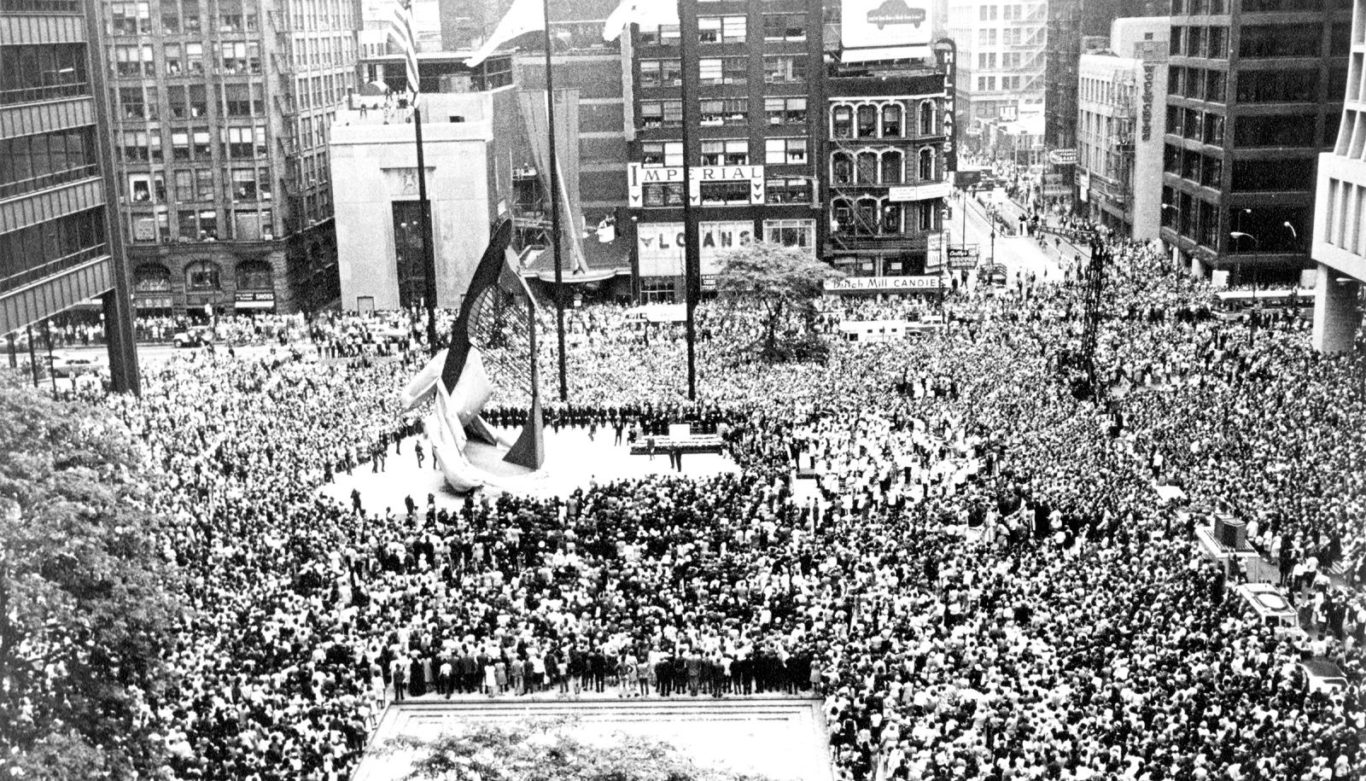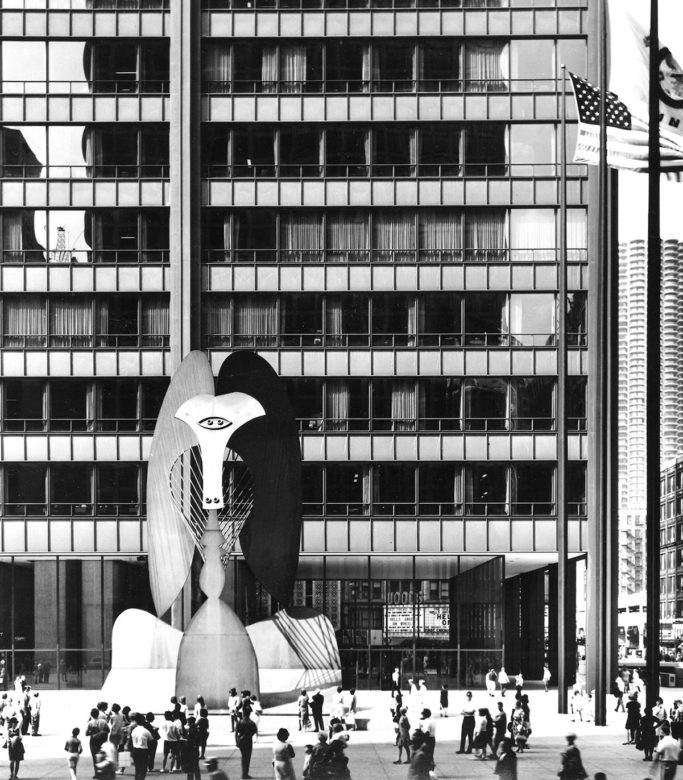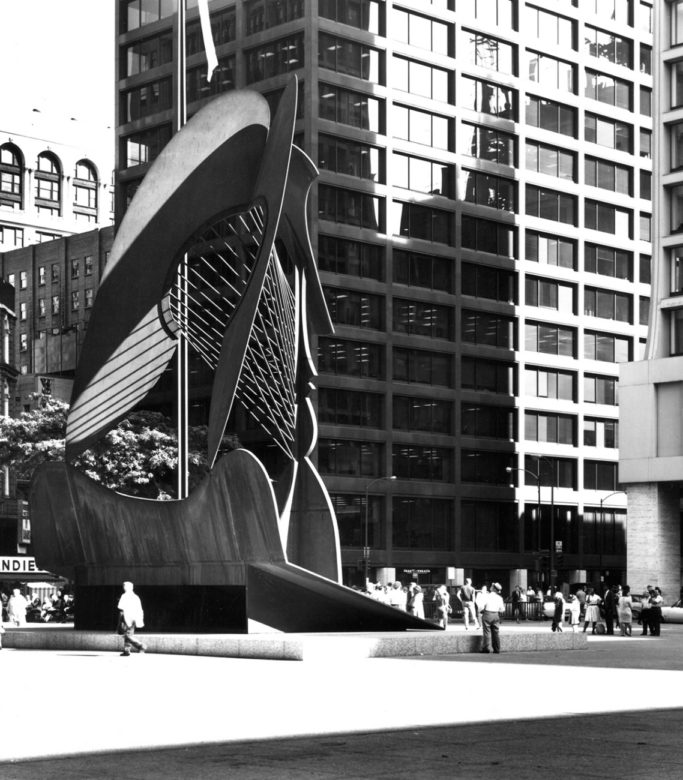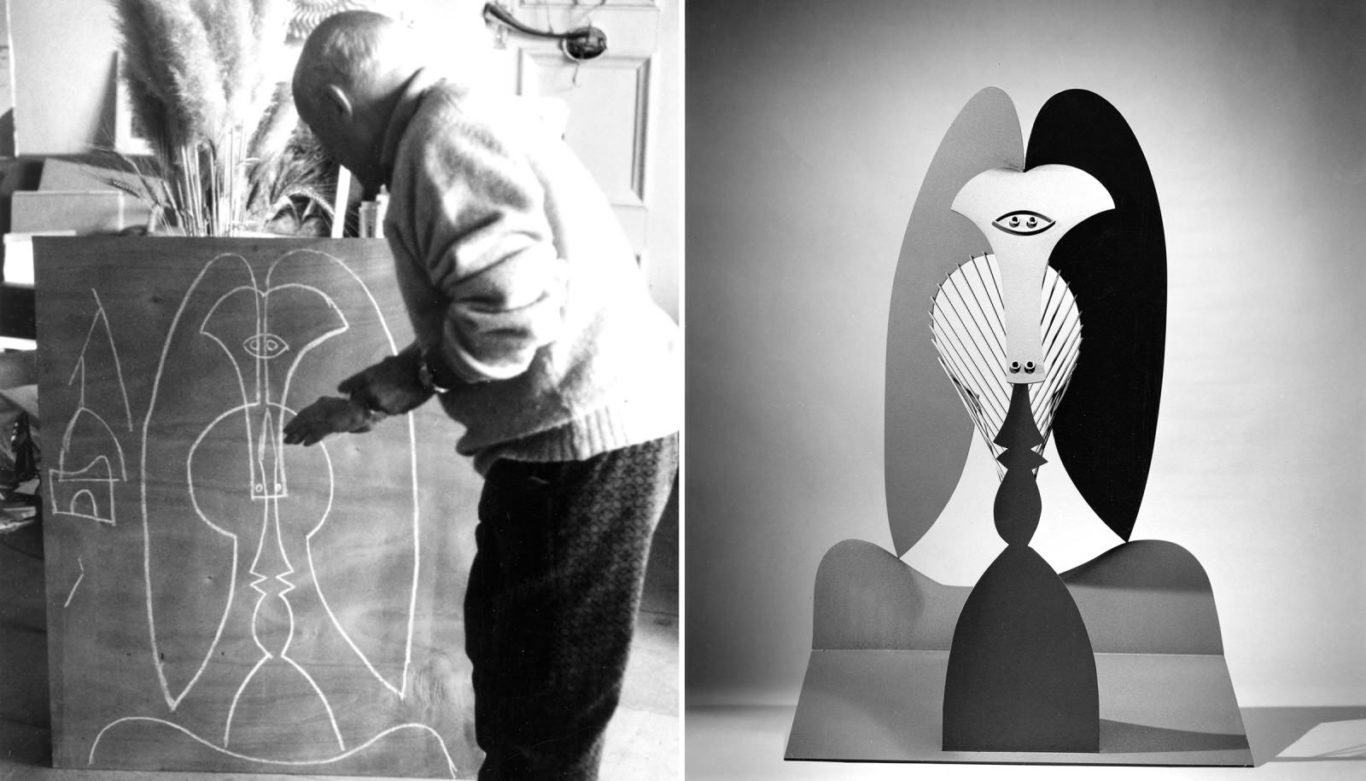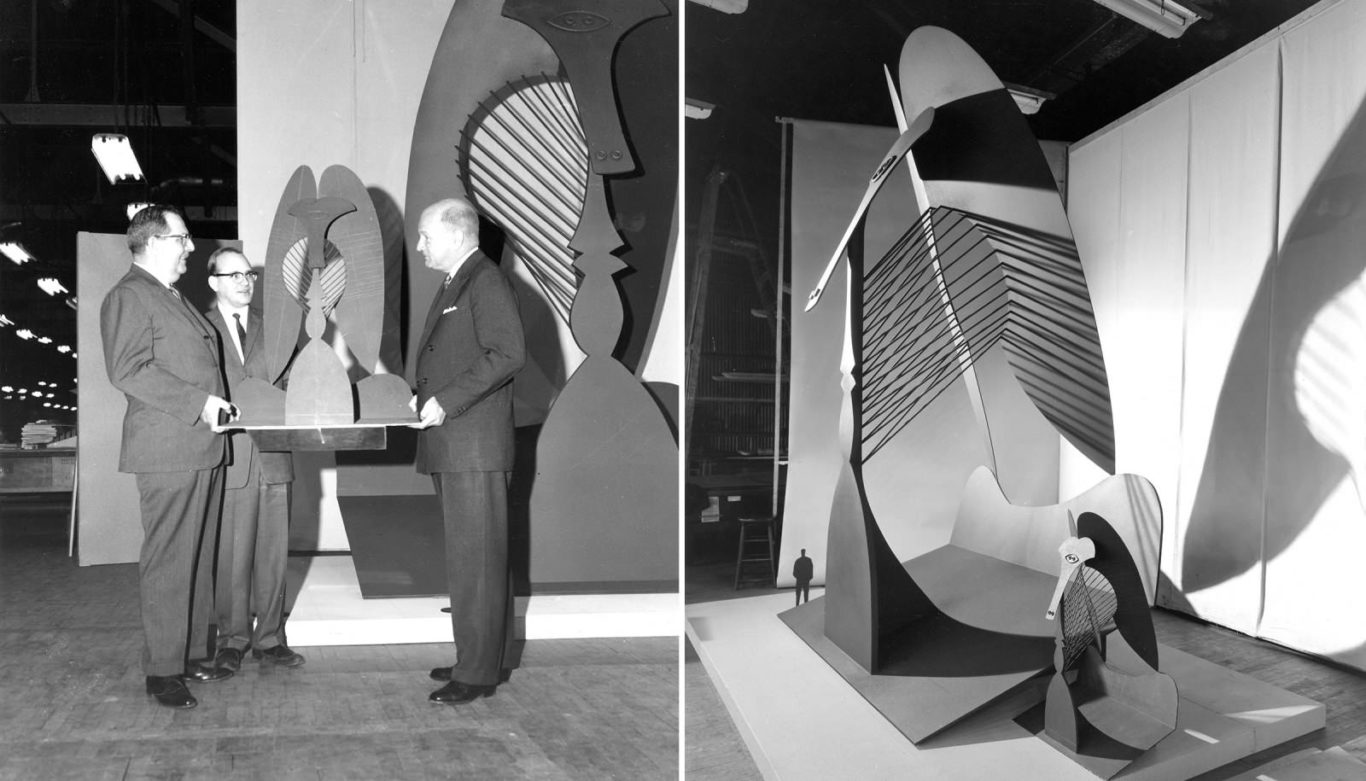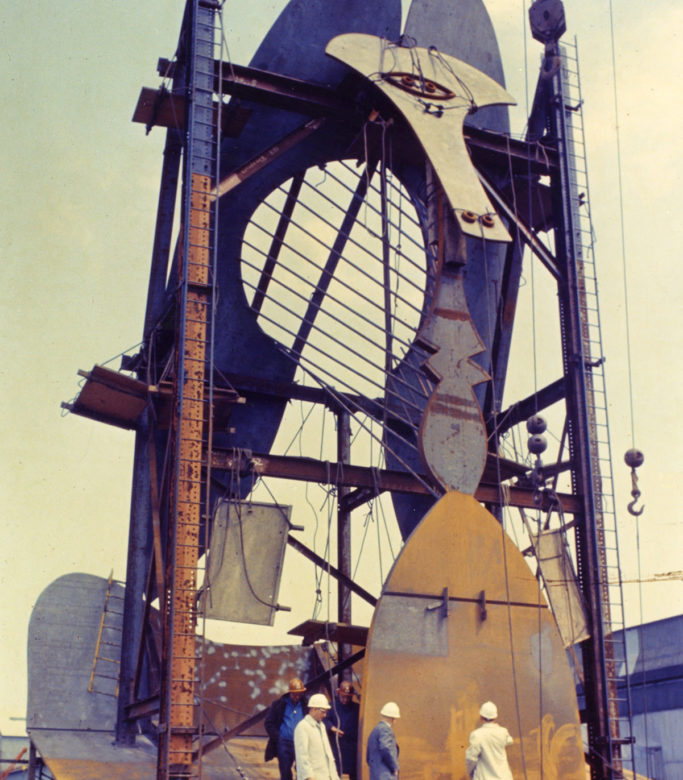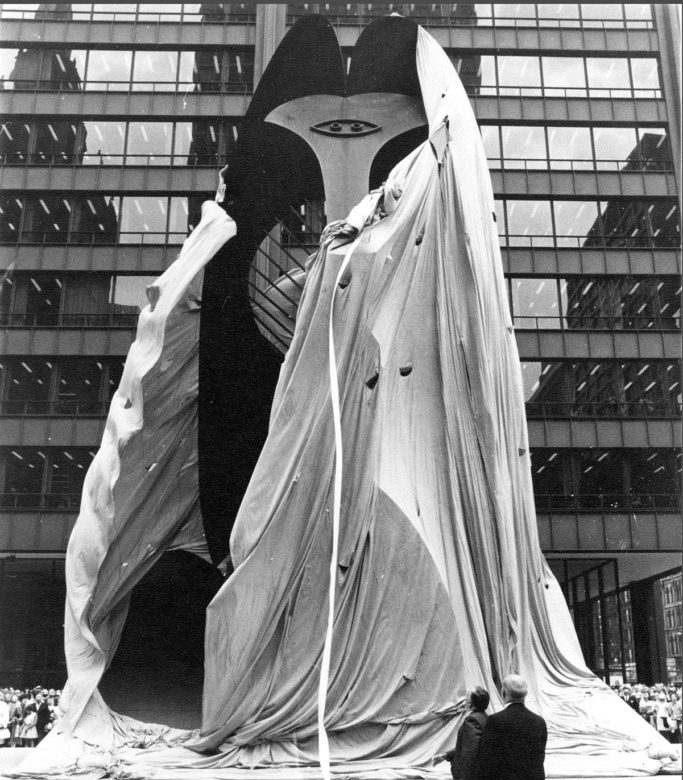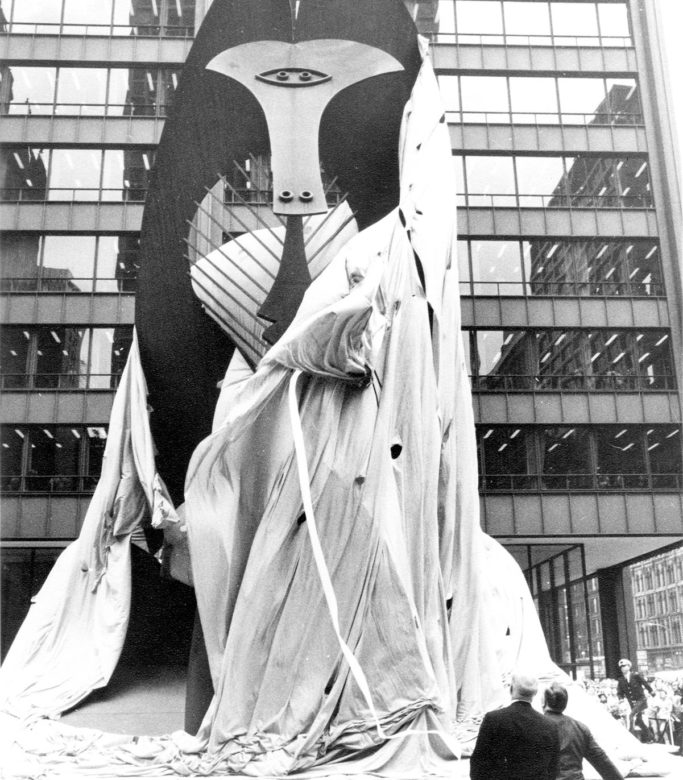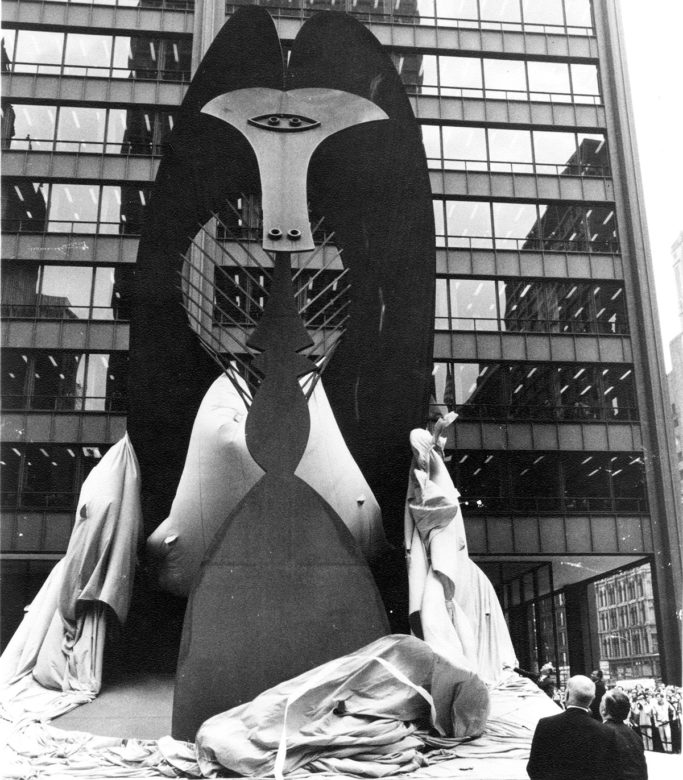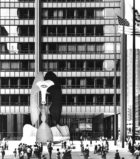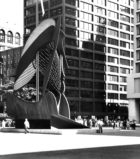Picasso’s first monumental sculpture in America — known simply as the Chicago Picasso — designates the plaza in front of the Chicago Civic Center as a public gathering space. The sculpture stands 50 feet tall on a base of granite, and is constructed of the same Cor-Ten steel as the building behind it.
In the 1960s, at the request of SOM Senior Partner William Hartmann, Picasso designed the site-specific sculpture to relate to the Civic Center. Hartmann envisioned the sculpture as an anchor for the center’s large granite plaza. Hartmann traveled to the artist’s home in southeastern France several times, presenting Picasso with photographs of Chicago and drawings of the projected 31-story Civic Center and adjoining plaza. Although Picasso had been sculpting for nearly 60 years, he had yet to create a large-scale civic sculpture.
Picasso spent over a year developing a maquette that he gifted to the Art Institute of Chicago. Working from the artist’s detailed guidelines, Hartmann supervised SOM’s team of structural engineers as they facilitated construction of the public artwork. The low-maintenance Cor-Ten steel was fabricated by the American Bridge Division of the United States Steel Corporation.
Unveiled on August 15, 1967, the sculpture is an enigmatic depiction of a head. Depending on the viewer’s vantage point, the shape of the sculpture changes from a woman’s profile to an animal’s head to a purely abstract form. Although it received mixed reviews on its unveiling, Picasso’s masterpiece has since become a beloved symbol of Chicago. In 1981, a companion piece by Joan Miró was unveiled across the street, attesting to the Chicago Picasso’s enduring influence on the city and its public art.
